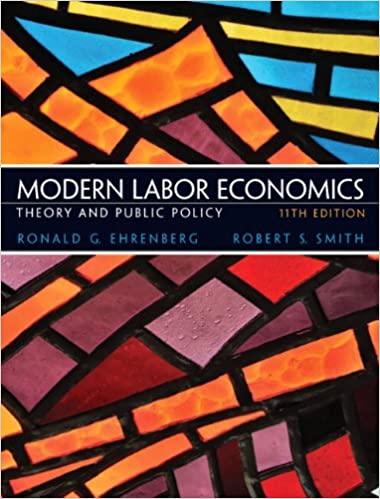There are two sectors of the construction industry that currently pay their employees the market-clearing wage. The
Question:
There are two sectors of the construction industry that currently pay their employees the market-clearing wage. The demand for labor in each sector is MRPL = 12 - L, where L = the number (in thousands) of workers. The supply of labor in each sector is L = W - 2, where W = the wage rate
(dollars per hour).
A union organizes in one of the sectors, and it restricts supply to that sector by insisting that only those in the union are hired by firms in that sector (and it is difficult to get into the union). When the employees in this sector unionize, the supply of labor in that sector changes to L = W - 4.
a. What is the wage rate in both sectors before unionization? How many employees will be hired in each sector?
b. What is the wage rate in the unionized sector? How many employees will be hired in the unionized sector?
c. If the unemployed workers in the newly unionized sector spill over into the nonunion sector, what will be the wage rate in the nonunion sector? How many employees will be hired in that sector?
d. What is the union relative wage advantage?
What is the true absolute effect?
Step by Step Answer:

Modern Labor Economics Theory And Public Policy
ISBN: 9780132540643
11th Edition
Authors: Ronald Ehrenberg, Robert Smith





